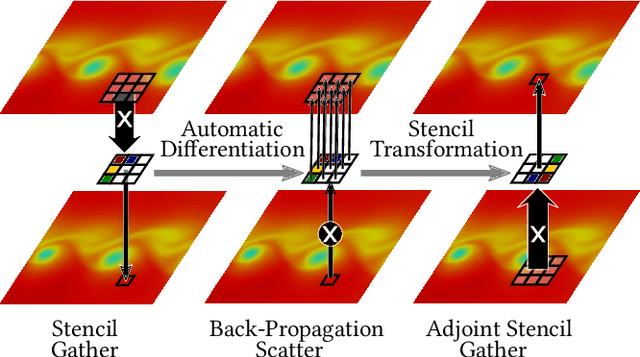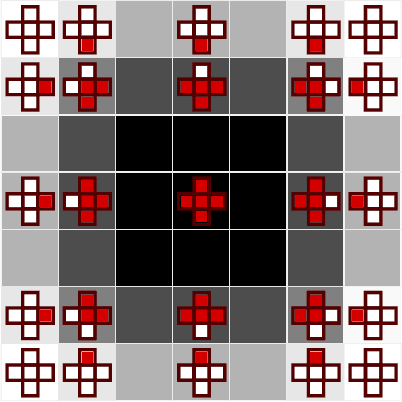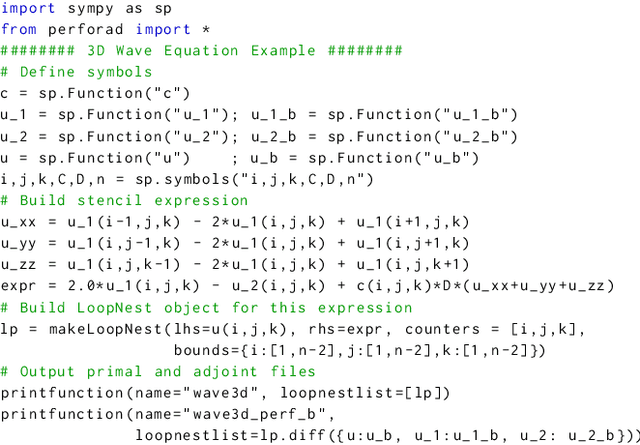Sri Hari Krishna Narayanan
Profiling checkpointing schedules in adjoint ST-AD
May 24, 2024Abstract:Checkpointing is a cornerstone of data-flow reversal in adjoint algorithmic differentiation. Checkpointing is a storage/recomputation trade-off that can be applied at different levels, one of which being the call tree. We are looking for good placements of checkpoints onto the call tree of a given application, to reduce run time and memory footprint of its adjoint. There is no known optimal solution to this problem other than a combinatorial search on all placements. We propose a heuristics based on run-time profiling of the adjoint code. We describe implementation of this profiling tool in an existing source-transformation AD tool. We demonstrate the interest of this approach on test cases taken from the MITgcm ocean and atmospheric global circulation model. We discuss the limitations of our approach and propose directions to lift them.
Streamlining Ocean Dynamics Modeling with Fourier Neural Operators: A Multiobjective Hyperparameter and Architecture Optimization Approach
Apr 10, 2024



Abstract:Training an effective deep learning model to learn ocean processes involves careful choices of various hyperparameters. We leverage the advanced search algorithms for multiobjective optimization in DeepHyper, a scalable hyperparameter optimization software, to streamline the development of neural networks tailored for ocean modeling. The focus is on optimizing Fourier neural operators (FNOs), a data-driven model capable of simulating complex ocean behaviors. Selecting the correct model and tuning the hyperparameters are challenging tasks, requiring much effort to ensure model accuracy. DeepHyper allows efficient exploration of hyperparameters associated with data preprocessing, FNO architecture-related hyperparameters, and various model training strategies. We aim to obtain an optimal set of hyperparameters leading to the most performant model. Moreover, on top of the commonly used mean squared error for model training, we propose adopting the negative anomaly correlation coefficient as the additional loss term to improve model performance and investigate the potential trade-off between the two terms. The experimental results show that the optimal set of hyperparameters enhanced model performance in single timestepping forecasting and greatly exceeded the baseline configuration in the autoregressive rollout for long-horizon forecasting up to 30 days. Utilizing DeepHyper, we demonstrate an approach to enhance the use of FNOs in ocean dynamics forecasting, offering a scalable solution with improved precision.
Surrogate Neural Networks to Estimate Parametric Sensitivity of Ocean Models
Nov 10, 2023



Abstract:Modeling is crucial to understanding the effect of greenhouse gases, warming, and ice sheet melting on the ocean. At the same time, ocean processes affect phenomena such as hurricanes and droughts. Parameters in the models that cannot be physically measured have a significant effect on the model output. For an idealized ocean model, we generated perturbed parameter ensemble data and trained surrogate neural network models. The neural surrogates accurately predicted the one-step forward dynamics, of which we then computed the parametric sensitivity.
Automatic Differentiation for Adjoint Stencil Loops
Jul 05, 2019



Abstract:Stencil loops are a common motif in computations including convolutional neural networks, structured-mesh solvers for partial differential equations, and image processing. Stencil loops are easy to parallelise, and their fast execution is aided by compilers, libraries, and domain-specific languages. Reverse-mode automatic differentiation, also known as algorithmic differentiation, autodiff, adjoint differentiation, or back-propagation, is sometimes used to obtain gradients of programs that contain stencil loops. Unfortunately, conventional automatic differentiation results in a memory access pattern that is not stencil-like and not easily parallelisable. In this paper we present a novel combination of automatic differentiation and loop transformations that preserves the structure and memory access pattern of stencil loops, while computing fully consistent derivatives. The generated loops can be parallelised and optimised for performance in the same way and using the same tools as the original computation. We have implemented this new technique in the Python tool PerforAD, which we release with this paper along with test cases derived from seismic imaging and computational fluid dynamics applications.
 Add to Chrome
Add to Chrome Add to Firefox
Add to Firefox Add to Edge
Add to Edge